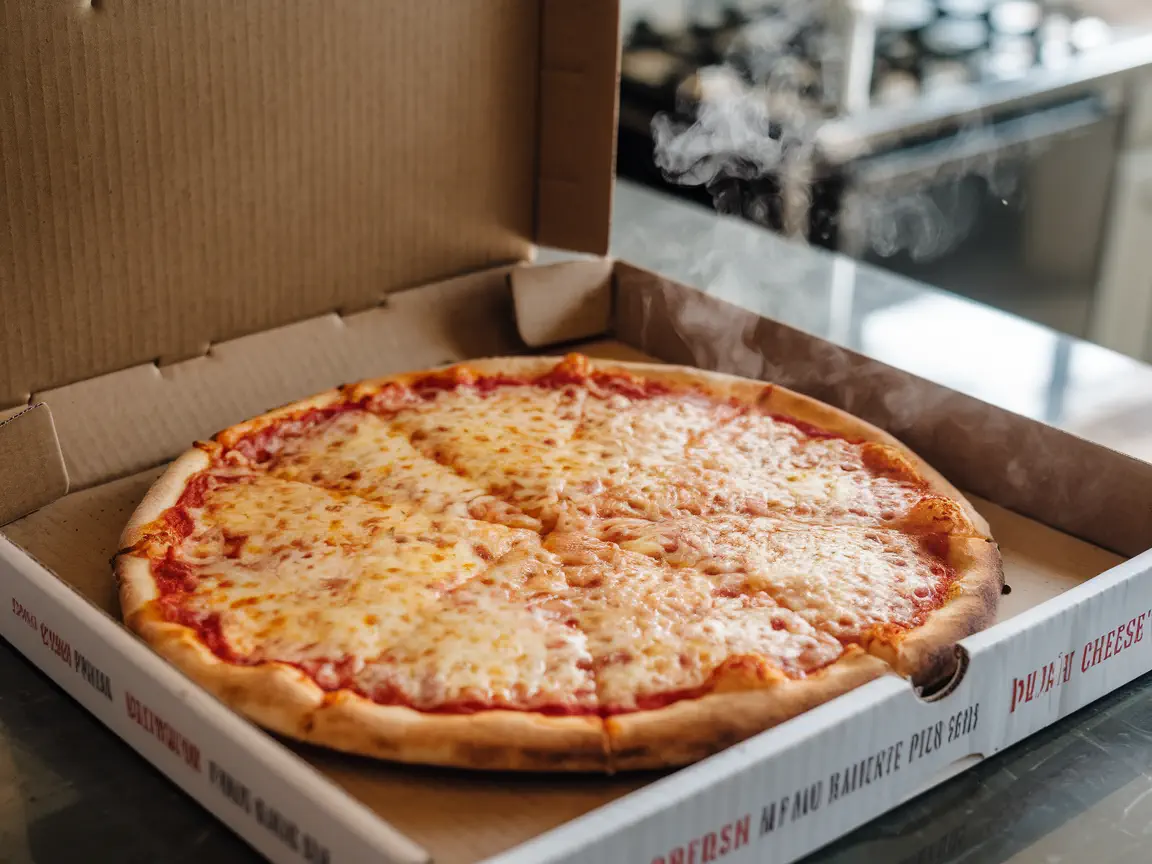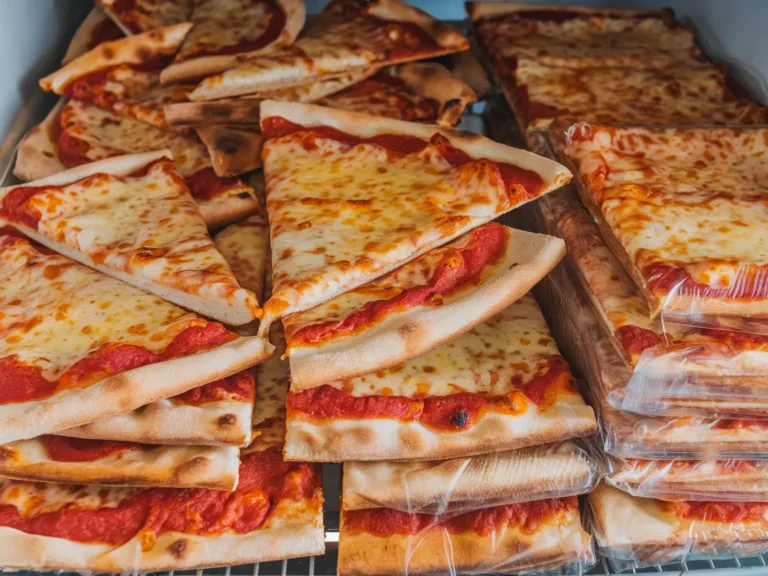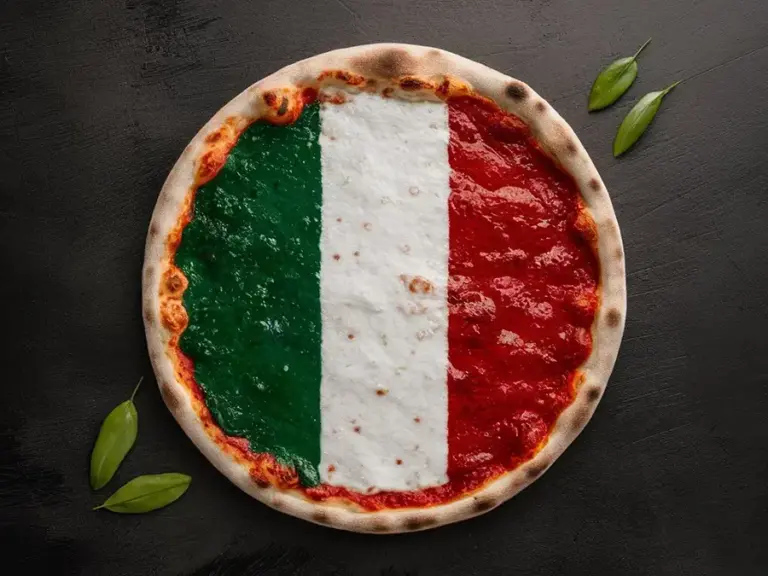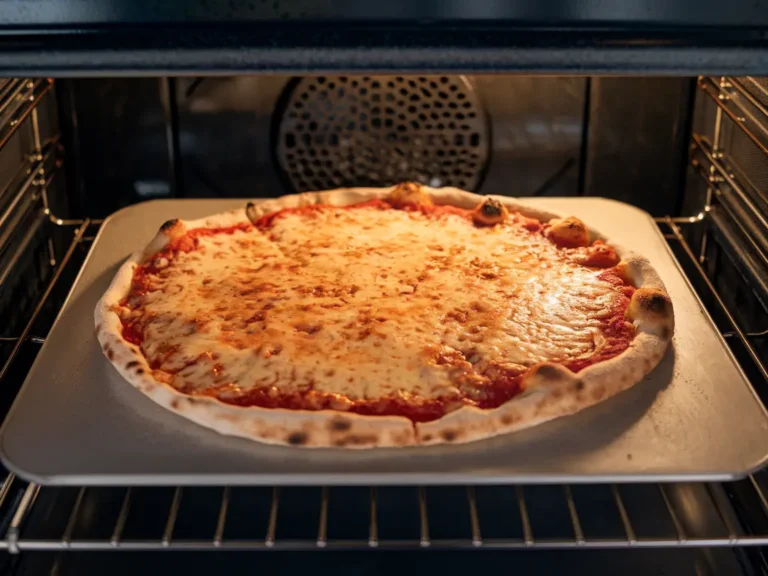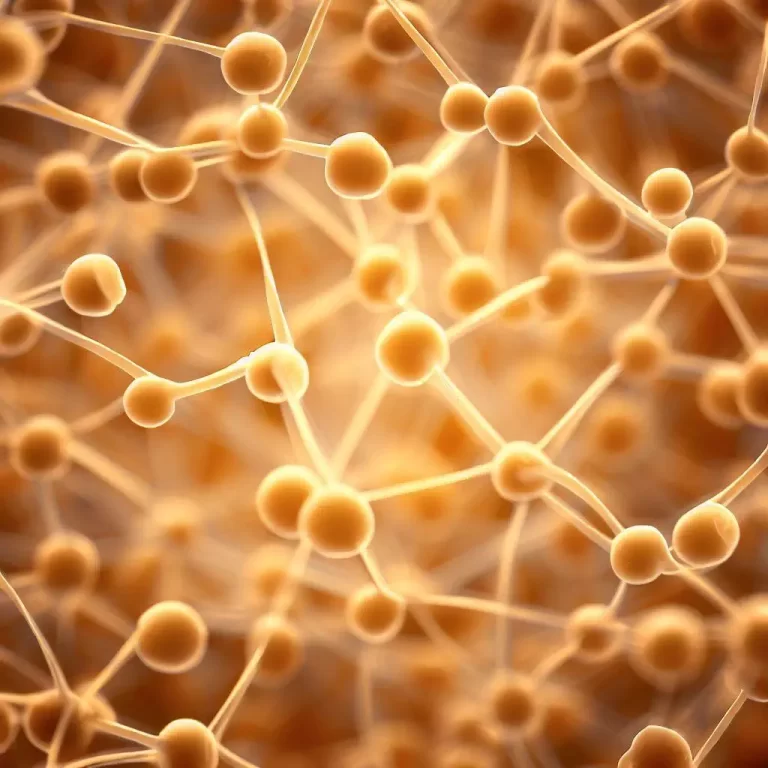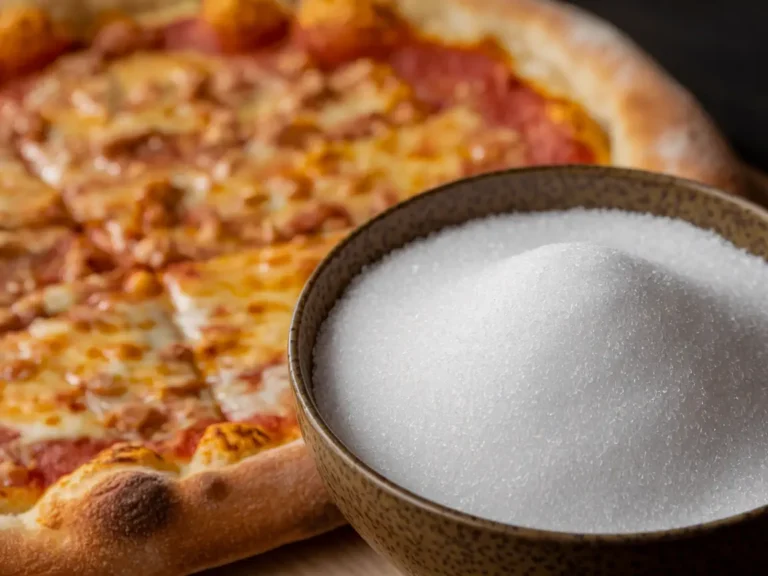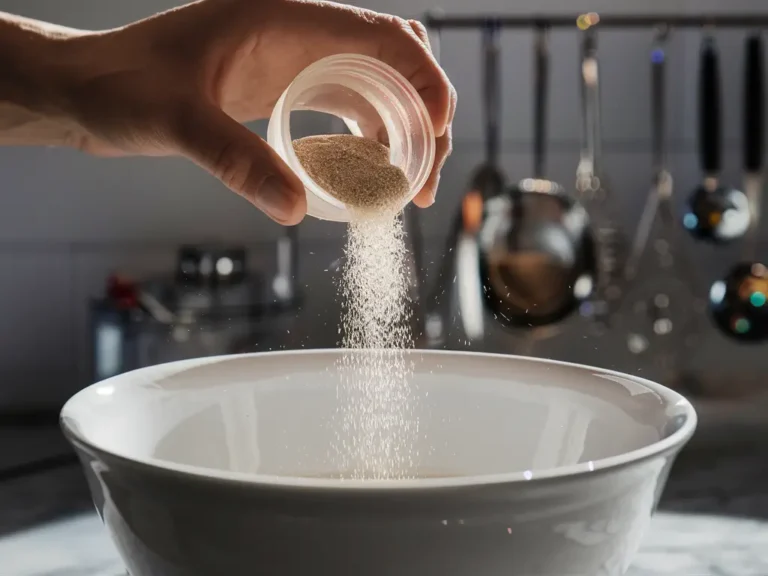Why Pizza Loses Quality During Delivery – And How to Prevent It and Restore Freshness
Pizza delivery is the most popular way to enjoy pizza at home, but the pizza that arrives at our door is far from the same one that came out of the oven just 30 minutes earlier. In this article, we’ll explore what happens to pizza during delivery, how it affects its quality, and the best ways to minimize these effects. We’ll also see how to restore freshness to your delivery pizza, making it taste like it just came out of the oven
Introduction: How Delivery Affects Pizza Quality and Texture
Everyone knows that pizza is one of the most beloved foods in the world, and consistently ranks among the most delivered.
However, what’s less known is how the journey a pizza takes to our homes affects its quality – often to the point that it may arrive as a completely different product than the one that came out of the oven.
The purpose of this article is to give you, as pizza lovers – whether you order pizza for yourself or deliver it to others – an understanding of the processes a delivery pizza undergoes from the moment it leaves the oven, to the first bite. We will also cover how to restore its freshness, as if it had just come out of the oven.
All the information below also applies to takeaway or pickup pizzas that aren’t eaten on-site (dine-in) or, in short, to all DELCO pizzas (delivery and carry-out), as these also travel from the pizzeria to our homes.
What Happens to Pizza During Delivery, and Why It Matters
From the moment a pizza – any pizza – comes out of the oven, it begins undergoing changes that affect its texture and eating quality. On top of these natural processes, a delivered pizza endures additional “abuse” by being confined in a closed box, inside a sealed bag, for a considerable amount of time.
Simply put: The pizza that arrives at our home, is a completely different product from the one that left the oven. The pizza we enjoy when dining in at a pizzeria often bears little resemblance to that same pizza when delivered – and more often than not, the difference isn’t for the better.
Ironically, despite being one of the least delivery-friendly foods, pizza is one of the most popular takeout choices. In fact, when it comes to how delivery affects food quality, the only thing that might hold up worse than pizza is French fries.
You can read about the specific processes that affect the texture and quality of pizza in the article linked above. In short, from the moment a pizza leaves the oven, it undergoes three main processes:
- Toughening and loss of softness (starch retrogradation): Starch molecules revert to their crystalline structure, causing the dough to lose its softness and become tough. This is the primary reason baked goods lose their freshness as they cool.
- Moisture migration: Moisture moves from the crumb (the inner, ‘soft’ layer of the rim) and toppings to the crust (the crispy outer layer), leading to a loss of crispiness and a transition to a leathery/rubbery or spongy texture.
- Changes in the texture of the cheese: Beyond the changes affecting the baked dough, the cheese also declines in quality, becoming rubbery over time.
These processes occur in every pizza, from the moment it comes out of the oven, regardless of whether it is delivered or not.
The rate and extent of each process depend on several factors, including the dough composition, topping, baking method, post-baking handling, and the time elapsed since baking. Generally, the longer the time, the greater the impact on the pizza’s eating qualities.
For example, Neapolitan pizza, due to its fast baking at extremely high temperatures, loses its quality quickly – within minutes, the dough becomes tough, leathery, and unpleasant to eat, even if it just sits on the plate. This is why Neapolitan pizza is primarily meant for dining in; it suffers greatly in quality when delivered.
In contrast, cracker-style pizzas hold up remarkably well, making them a much better option for delivery.
Additional Effects of Delivery on Pizza
If the natural changes pizza undergoes after leaving the oven aren’t enough, delivery conditions can make things even worse.
Once out of the oven, the pizza spends most of its time in a closed box, leading to two major issues:
- Moisture accumulation: As water evaporates from the hot components – dough, sauce, cheese, and toppings – the box traps the moisture. This moisture is then reabsorbed by the dough, making it spongy and mushy, while eliminating any crispiness it once had.
- Soggy bottom: At the end of baking, steam escapes from the hot pizza. When placed directly into a delivery box, the steam has nowhere to go, leading to moisture buildup at the base. This results in a wet, soggy bottom that compromises both texture and structure.
As you can see, being trapped in a closed box does pizza no favors, significantly altering its texture.
How to Minimize Quality Loss in DELCO Pizza
DELCO = Delivery and Carry-Over [pickup/takeaway].
Here are a few steps you can take to minimize the quality loss of your delivered pizza:
Adding Fat to the Dough
Adding any type of fat to the dough (oil, butter, shortening etc.) slows retrogradation, delays crumb toughening, and helps maintain a soft, tender texture for longer. Even a small amount, around 1–2% (in baker’s percentage), can significantly delay toughening.
Adding fat is the simplest, most effective, and most ‘natural’ method to ensure a pizza that retains its softness for longer.
In the video below, you can see three Neapolitan pizzas, all made from the same dough, using the exact same process, 10 minutes after baking. The only difference is the amount of oil in the dough. The tested oil amounts are:
- 0% (the first marinara pizza)
- 3% (the second pizza)
- 6% (the third pizza)
As you can see, adding oil significantly impacts the dough’s ability to retain softness. Just 10 minutes after baking, the first pizza had already lost its softness and turned tough, while the pizzas containing oil remained noticeably softer. Even at just 3% oil, the effect was clear and significant.
In summary: adding fat to the dough, even in small amounts of 1–2%, helps slow retrogradation and preserve softness for longer.
Using Lower Protein Flour
High(er) protein flour creates a stronger gluten network, which undergoes more pronounced structural changes as the pizza cools, leading to a firmer, chewier texture.
The higher the protein content in flour, the tougher and chewier the pizza will be – both when fresh, and especially after it has cooled.
In summary: Using flour with lower protein content helps minimize gluten-related toughening as the pizza cools, resulting in a softer, more tender texture that lasts longer.
Using a Delivery Box with Air Vents
Using delivery boxes with air vents helps release steam outside the box, preventing it from accumulating inside, soaking into the pizza, and making it soggy.
Make sure the ventilation holes are actually open, and not blocked/closed.
Placing the Pizza on a Cooling Surface Before Transferring It to the Box
Many pizzerias transfer the pizza directly to the delivery box right after removing it from the oven, causing moisture to accumulate on the bottom.
To prevent this, it’s recommended to place the pizza on a cooling surface – any elevated surface that allows steam to escape from the bottom of the pizza – for at least 30 seconds (preferably a full minute) after removing it from the oven.
This brief time on the cooling surface allows most of the steam to escape, significantly reducing the chances of the pizza bottom becoming wet and soggy in the box.
Avoid Using High-Moisture Toppings
High-moisture toppings like onions, tomatoes, peppers, and mushrooms release significant moisture during baking, and continue to do so as the pizza cools.
For pizzas intended for delivery, it’s best to limit the use of these toppings, or adjust their preparation (see the next section).
Pre-Drying High-Moisture Toppings
When a pizza contains high-moisture toppings, it’s helpful to dry them out as much as possible during baking.
This can be achieved by:
- Using the convection mode in a home oven, which circulates hot air to help dry the toppings.
- Using a conveyor oven, which works similarly by circulating hot air to aid in drying.
- Pre-cooking the toppings before adding them to the pizza to evaporate some of the moisture.
Using a Pizza Box Liner/Insert
Dedicated pizza box liners have a zigzag or wave texture with “channels,” which create “exit paths” for steam to escape. This prevents moisture from accumulating on the bottom of the pizza.
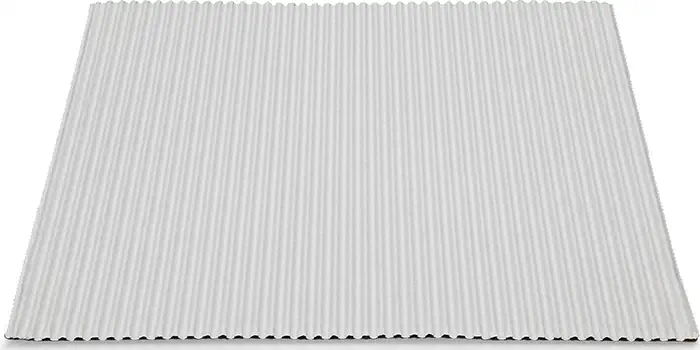
Baking at a Lower Temperature
The higher the baking temperature, the more gelatinization occurs, which accelerates retrogradation, causing the dough to toughen and lose its softness more quickly.
Thus, baking at a lower temperature (which naturally extends the baking time) helps delay retrogradation, slowing down the toughening process, and preserving the pizza’s softness for longer. The lower the baking temperature, the slower retrogradation will occur.
In addition, a lower baking temperature also results in a thicker crust, which is more resistant to moisture migration, and retains crispiness better.
A prime example of this is, again, Neapolitan pizza, which rapidly loses its softness (and crispiness) and becomes tough and leathery just minutes after leaving the oven.
In summary: Baking at a lower temperature will help retain the softness of the pizza for a longer time.
How to Restore Delivery Pizza’s Freshness Through Reheating
Now that we know the pizza arriving at our home isn’t the same as the one that left the pizzeria, how can we restore its ‘freshness’? Simply: by reheating it in the oven (yes, even if it arrived hot).
For more on how reheating “reverses” starch retrogradation and restores freshness in baked goods, see Why Pizza Becomes Tough When It Cools and How to Preserve Its Freshness [What Makes Baked Goods Go Stale].
In short, reheating will:
- Break down crystallized starch molecules, restoring softness and tenderness to the dough.
- Restore the texture of the cheese, making it soft and stretchy again instead of rubbery.
- Bring back crispiness to the crust.
Simply put, reheating restores the pizza’s texture and eating qualities, making it taste as fresh as if it just came out of the pizzeria’s oven.
Yes, this approach goes against the idea of delivery pizza being ready to eat with no extra steps; But, if you want to enjoy your delivery pizza at its best, this is the way to go.
How to Reheat a Delivery Pizza for Best Results
Follow these steps to optimally reheat a delivery pizza:
1. Preheat the Oven: Set the oven to 180°C (350°F) using either conventional baking mode (upper and lower heating elements) or convection mode. Place an oven rack in the middle position.
Allow the oven to heat for at least 15 minutes before placing the pizza inside. If possible, turn it on right after ordering, so it’s ready when the pizza arrives.
Using convection mode is highly recommended for reheating a hot delivery pizza, as it significantly helps restore crispiness.
If you have a pizza stone or baking steel, preheat it along with the oven. Otherwise, use a sheet tray, or place the pizza directly on the oven rack if it’s large enough.
2. Place the Pizza in the Oven: Carefully place the pizza on the baking surface or directly on the oven rack.
3. Heat the Pizza: Allow the pizza to heat for about 5 minutes, or until the cheese begins to bubble slightly and the crust feels crispy. Check every minute or two to prevent the dough and cheese from drying out, especially if using convection mode.
4. Cooling and Serving: Remove the pizza from the oven and place it on an elevated surface to allow steam to escape from the bottom, for at least a minute. This step is crucial to prevent the bottom from reabsorbing moisture and becoming soggy. Once the steam has dissipated, transfer the pizza to a plate or serving dish, and enjoy!
Enjoy the content on PizzaBlab? Help me keep the oven running!

